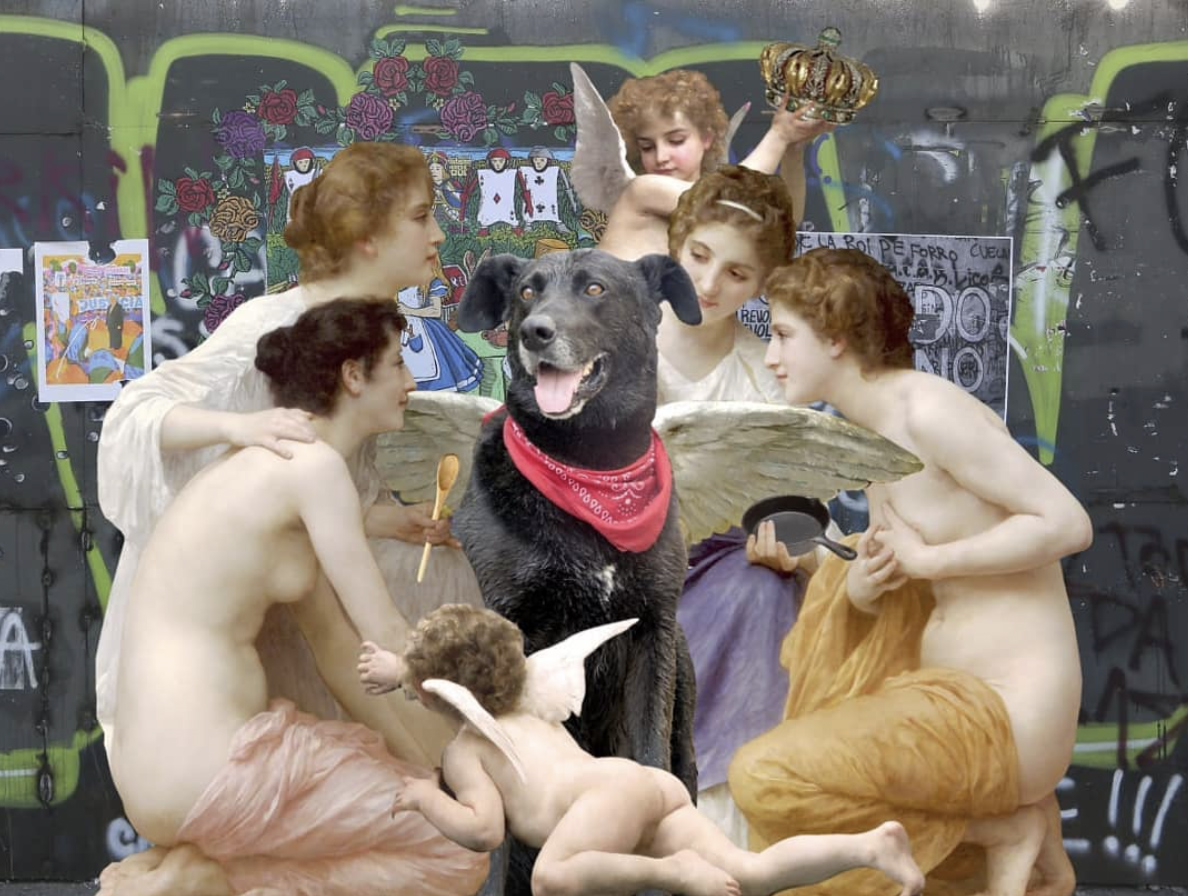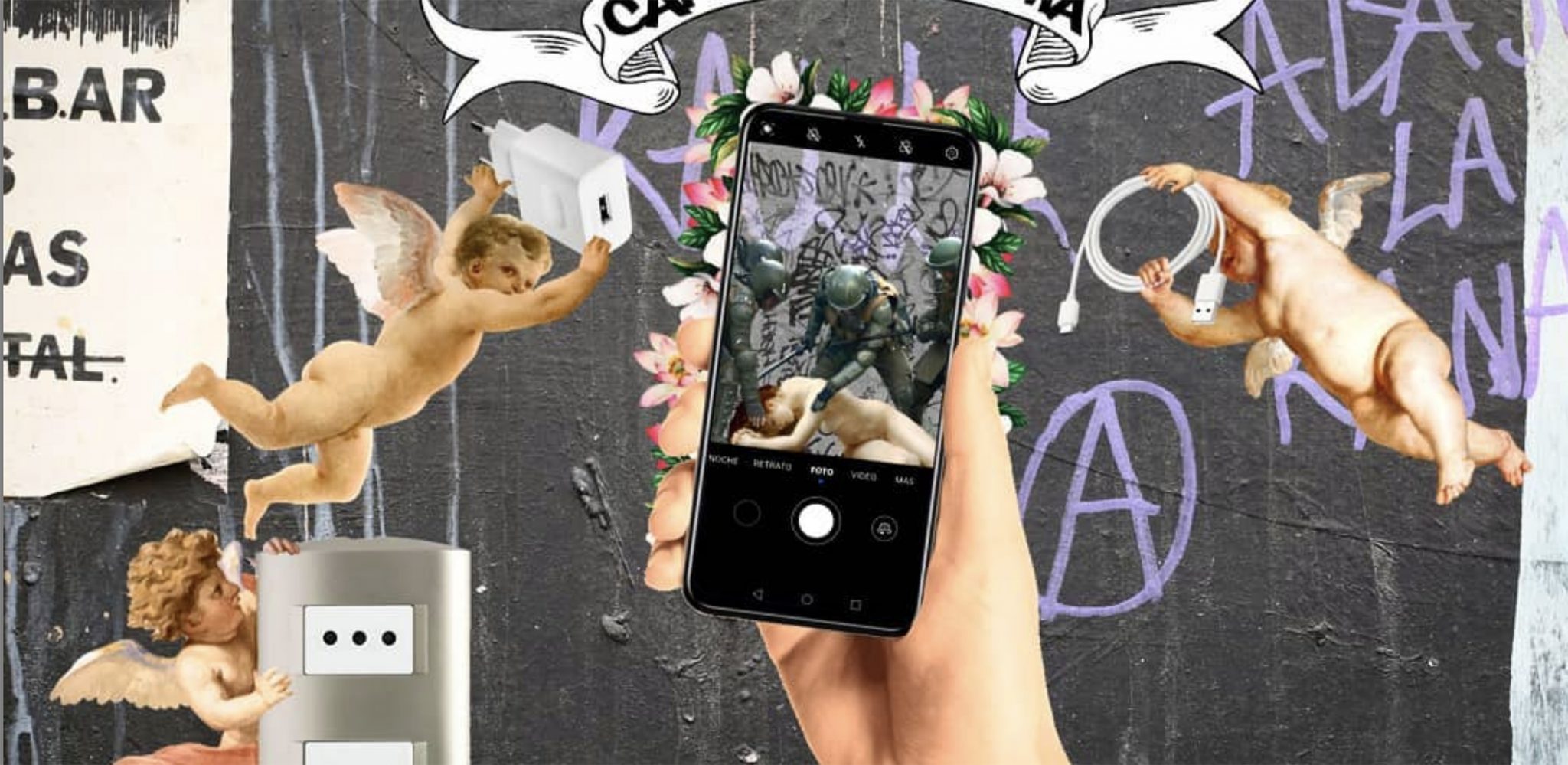The referendum on Sunday has brought out thousands calling for change
Since last October, the walls of Chile’s cities and towns have been ablaze with colour. Feminist slogans, symbols of the Mapuche indigenous community and images of protest are daubed throughout the streets as a magna carta for a new Chile.
In Santiago, the city’s streets had become the people’s streets, turned into a gallery by artists in response to a social uprising unseen before in Chile’s history.
“The fight was always in the street, and the walls speak for themselves,” says Pedro Isaac, a collageist and graphic designer known as Ordeph.
It has been a year since the country’s estallido social (social explosion) began. Sparked by a rise in metro fares, a student revolt in the capital was the catalyst for national protests against decades of inequality and injustice. The protesters’ demands were diverse, but eventually formed into unified calls to change the country’s dictatorship-era constitution. Widely blamed for Chile’s social and economic problems, a historic referendum on whether to rewrite this hangover from the dark past will take place on Sunday 25 October.

The art of the estallido spread across the country as quickly as the protests themselves.
Artist Lolo Gongora says she was spurred on to make work by “the same mobilising rage” of the protests. Her work is proudly feminist, and her designs of women wearing the feminist green scarf, associated with the pro-abortion movement, is a symbol for the Chilean women who have taken to the streets over the years. “These images are now part of history as a legitimate form of demonstration and protest, showing inequalities and the injustices that we live as women every day.”
Chile’s history is riddled with complexity – a bitter coup in 1973 overthrew the world’s first democratically elected socialist government, instilling a 17-year dictatorship, while the following 30 years of democracy have brought progress but deepened inequality.
During the dictatorship, in which thousands of citizens opposed to the Pinochet regime were tortured, political prisoners would write songs or create tapestries and embroideries on pieces to denounce the dictatorship (many took inspiration from the musician Violeta Parra whose arpilleras were shown at the Louvre, Paris, in 1964; Parra shot herself in 1967). It was a way to keep memories alive and tell stories of what was happening when voices were being suppressed.
As the recent uprising faced brutal and sometimes lethal repression by state forces, this violence became a potent subject for artists. The eyes of statues in cities across the country have been painted red, weeping tears of blood in reference to the more than 460 people blinded by police weapons in the last year.

Street artist Caiozzama says art has always been used as a form of social or political statement in Chile. But the artwork created during the social uprising has managed to reach people and places it hadn’t before. “What’s new is where it is,” he says. “This art is in the nerve centre of the city, Plaza de la Dignidad (‘dignity square’). This is where the strength lies because people see it every day. Before, it was just in the suburbs.
“The central location of this art has a lot of power because in this country, the television, media and businesses just say what they want, so the street is providing information for the people. That’s its strength.”
Caiozzama uses a ‘paste-up’ technique and his previous work addressed global issues like ecology and capitalism, but now he focuses on his home country. “What changed and inspired me for the first time was Chile; the injustice that we saw, the violation of human rights,” he says. “People realised they were tired of the injustice, the system, and we finally woke up. I saw with my own eyes what was happening.”
This central location on the city’s walls has democratised the artistic sphere and made it accessible to all, being picked up by social media so these images of protest are seen thousands of miles away. The performance piece created by feminst group Las Tesis, for example, which calls out rape culture and institutional sexism, spread across the world just days after it was first performed in November last year. A video went online and spread like wildfire across social media. The chant Un Violador en tu Camino was repeated by women in countries from India to the UK. The title, which translates as “A rapist in your path” plays on a slogan issued by the Carabineros national police in the 1990s: ‘A friend in your path.’
Response to the art from opposition forces also speaks volumes. Posters and graffiti that coloured Santiago’s walls are continuously painted over. But the art reemerges – each layer a testament to the determination of the movement.

One resounding image, which Caiozzama uses in his own work, is El Negro Matapacos, a black dog wearing a red bandana who became a symbol of resistance after a street dog who was seen growling at police during the student protests of 2011.
In November a large sculpture of Matapacos appeared in a central Santiago park. A few nights later he was set on fire, leaving just his empty skeleton. By the next morning, the dog had been covered in flowers.
A similar sculpture of the dog now lives inside a new museum dedicated to the artwork, photography, film and audio collected during the estallido. The museum, located close to the Plaza de la Dignidad, was created out of the need for people to build their own memory of the events of the last year. It seeks to be a space of cultural resistance, according to its curator, artist Marcel Sola.
Now in its new home, this reimagined sculpture, like a phoenix from the flames, is a bold symbol of Chile’s future. This week, the country will vote on a new constitution in an effort to engage all people to decide what kind of Chile they want to live in.
Caiozzama recently installed a large print in the centre of the capital. Over triumphant hands holding a pot and a pan – a reference to the noisy cacerolazo protests during lockdown – two cherubs hold a sign that reads ‘approve’. Ahead of Sunday’s vote, it’s an image of hope for many Chileans.
